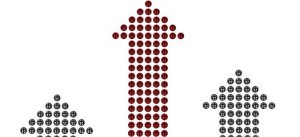How to Realign Your Team After the Loss of a Key Player
 Chicago Bulls point guard Derrick Rose tore some nasty things in his knee and is looking at rehab for six to nine months. He was the team’s best player, leading the Bulls to the playoffs each year since he started, earning Rookie of the Year, and becoming only the second Bulls player to earn the MVP. Now he’s out for 2012-13, and the Bulls have to figure out how to get to the playoffs without him. Organizations find themselves in this situation, maybe not because of torn ACLs, but the resulting chaos and confusion can be equally crippling. When you lose a crucial member, it can send your project team into a tailspin. How do you start winning again?
Chicago Bulls point guard Derrick Rose tore some nasty things in his knee and is looking at rehab for six to nine months. He was the team’s best player, leading the Bulls to the playoffs each year since he started, earning Rookie of the Year, and becoming only the second Bulls player to earn the MVP. Now he’s out for 2012-13, and the Bulls have to figure out how to get to the playoffs without him. Organizations find themselves in this situation, maybe not because of torn ACLs, but the resulting chaos and confusion can be equally crippling. When you lose a crucial member, it can send your project team into a tailspin. How do you start winning again?




 In the Project Management Body of Knowledge
In the Project Management Body of Knowledge  Suppose that you are having surgery; there is a risk that you’ll have trouble with anesthesia. It is possible that you could develop a clot, infection, or post-op pneumonia. Your surgeon has to prepare for these risks. But what if you should suffer a stroke during surgery (which is relatively rare)? Or your liver function is impaired (which is also uncommon)? Your doctor also has to be aware of these risks and have a plan to combat them in the operating room. Your organization needs to be an expertly trained surgeon, identifying both obvious and the less obvious risks and developing strategies to deal with them.
Suppose that you are having surgery; there is a risk that you’ll have trouble with anesthesia. It is possible that you could develop a clot, infection, or post-op pneumonia. Your surgeon has to prepare for these risks. But what if you should suffer a stroke during surgery (which is relatively rare)? Or your liver function is impaired (which is also uncommon)? Your doctor also has to be aware of these risks and have a plan to combat them in the operating room. Your organization needs to be an expertly trained surgeon, identifying both obvious and the less obvious risks and developing strategies to deal with them. Businesses would not dream of operating without insurance; what if someone gets hurt? What if there is a fire? What if there is earthquake damage or a meteor falls from space and lands on your facility? What if someone embezzles or steals confidential information? We need
Businesses would not dream of operating without insurance; what if someone gets hurt? What if there is a fire? What if there is earthquake damage or a meteor falls from space and lands on your facility? What if someone embezzles or steals confidential information? We need 